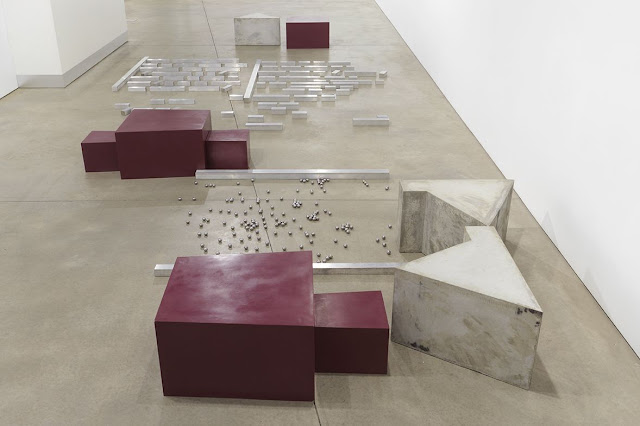Barry Edward Le Va (1941 – 2021) was an American sculptor and installation artist. Trained in his native California, he lived and worked in New York City. Le Va was among the leading figures of post-studio and process art to have emerged in the late 1960s. His abstract sculptures, installations, drawings, and editioned works are featured in major art collections around the world.
Le Va's pioneering scatter pieces on the floor, started in 1966, made him one of the first of the so-called Process artists. In 1969, he started to create works with cleavers serially embedded in walls or floors.More recently, he produced monumental abstract works and site-specific installations.
In 2005, Le Va's work was the subject of a major retrospective exhibition at the Institute of Contemporary Art, University of Pennsylvania, Philadelphia (ICA).The exhibition, Accumulated Vision, Barry Le Va, was accompanied by the publication of a comprehensive monograph of the artist's work. The ICA described Le Va's work as: "Since the late 1960s, the American artist Barry Le Va has used broken glass, meat cleavers, wool felt, ball bearings, powdered chalk, cast concrete, paper towels, linseed oil, a typewriter and a gun, among other things, to make his art. Part of a generation intent on knocking art off its pedestal, Le Va claimed the floor as his field of operations by scattering massive amounts of materials, or forms, to create works which he called "distributions." Apparently random, even chaotic, these installations are in fact premeditated and executed according to plan. Not surprisingly, drawing plays a significant role in the work of this artist whose formative training is in architecture. Le Va's distributions make him one of the leading practitioners of Post-minimalism and Process Art. But his own, preferred frame of reference comes not from recent art history, but from mystery novels. He has likened his installations to crime scenes and invites viewers to look for clues to reconstruct the, often violent, act or concept that underlies the..Wikipedia



















No comments:
Post a Comment